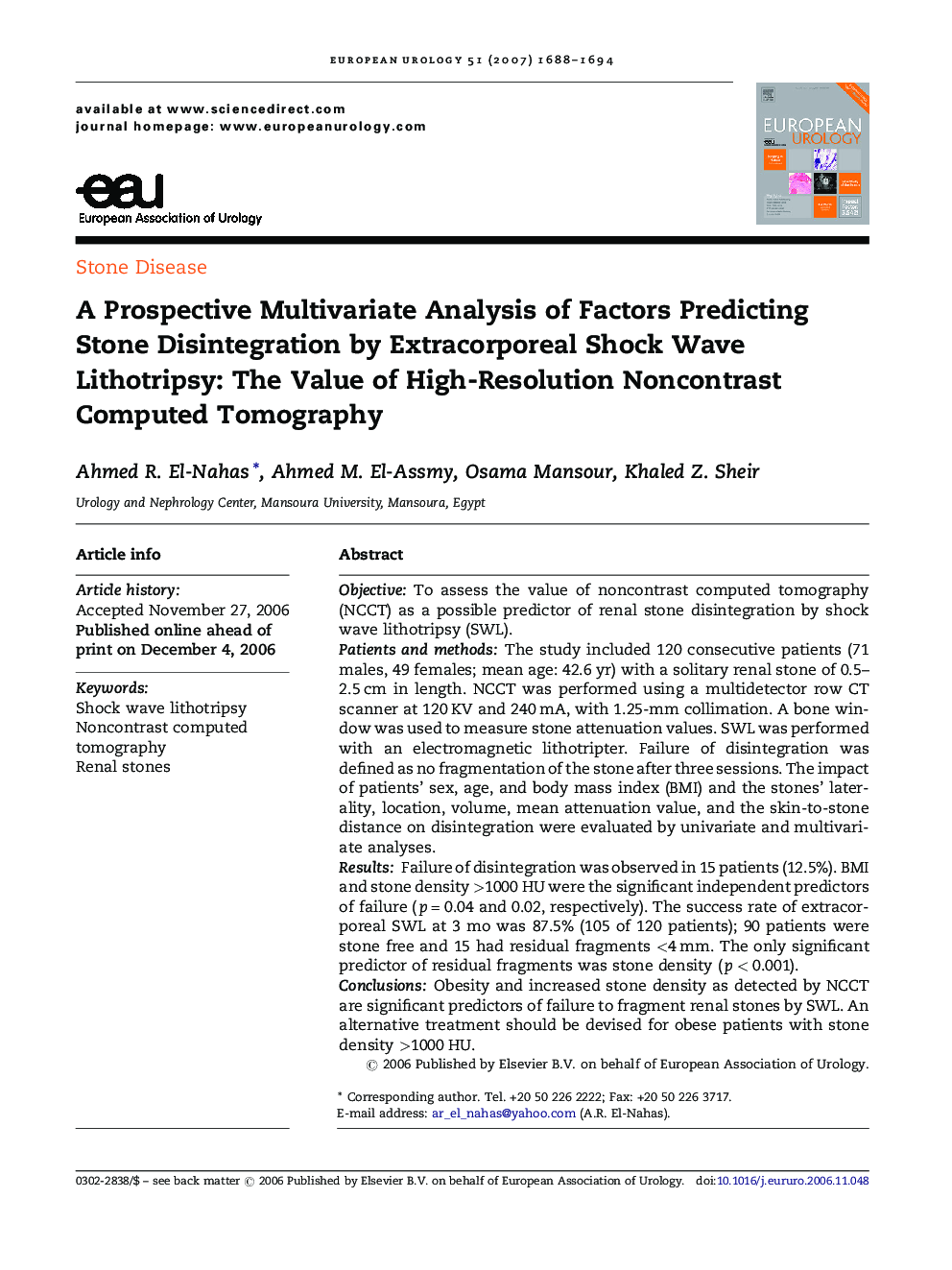| Article ID | Journal | Published Year | Pages | File Type |
|---|---|---|---|---|
| 3928506 | European Urology | 2007 | 7 Pages |
ObjectiveTo assess the value of noncontrast computed tomography (NCCT) as a possible predictor of renal stone disintegration by shock wave lithotripsy (SWL).Patients and methodsThe study included 120 consecutive patients (71 males, 49 females; mean age: 42.6 yr) with a solitary renal stone of 0.5–2.5 cm in length. NCCT was performed using a multidetector row CT scanner at 120 KV and 240 mA, with 1.25-mm collimation. A bone window was used to measure stone attenuation values. SWL was performed with an electromagnetic lithotripter. Failure of disintegration was defined as no fragmentation of the stone after three sessions. The impact of patients’ sex, age, and body mass index (BMI) and the stones’ laterality, location, volume, mean attenuation value, and the skin-to-stone distance on disintegration were evaluated by univariate and multivariate analyses.ResultsFailure of disintegration was observed in 15 patients (12.5%). BMI and stone density >1000 HU were the significant independent predictors of failure (p = 0.04 and 0.02, respectively). The success rate of extracorporeal SWL at 3 mo was 87.5% (105 of 120 patients); 90 patients were stone free and 15 had residual fragments <4 mm. The only significant predictor of residual fragments was stone density (p < 0.001).ConclusionsObesity and increased stone density as detected by NCCT are significant predictors of failure to fragment renal stones by SWL. An alternative treatment should be devised for obese patients with stone density >1000 HU.
